Whithorn, Bruce Street, Whithorn Priory
Burial Ground (Period Unassigned), Priory (Medieval), Tree Trunk Coffin(S) (Early Medieval)
Site Name Whithorn, Bruce Street, Whithorn Priory
Classification Burial Ground (Period Unassigned), Priory (Medieval), Tree Trunk Coffin(S) (Early Medieval)
Canmore ID 63298
Site Number NX44SW 5
NGR NX 44476 40313
Datum OSGB36 - NGR
Permalink http://canmore.org.uk/site/63298

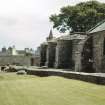
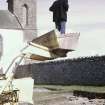
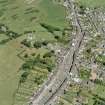
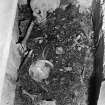

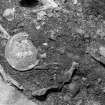

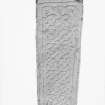






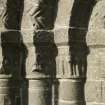

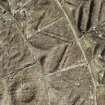
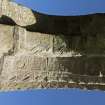

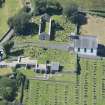


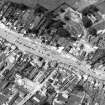

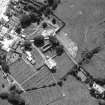



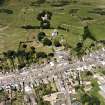
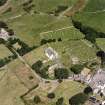



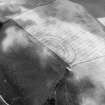

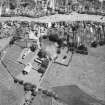
![Watching brief, Irregular cut [41] half-sectioned, Whithorn Cemetery Extension](http://i.rcahms.gov.uk/canmore/s/DP00305424.jpg)
![Watching brief, ‘Banana’-shaped pit [29] half-sectioned, Whithorn Cemetery Extension](http://i.rcahms.gov.uk/canmore/s/DP00305425.jpg)



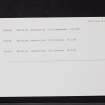
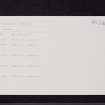
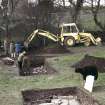

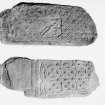






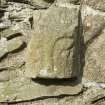
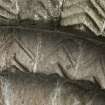

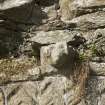
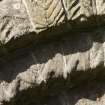



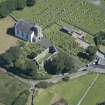

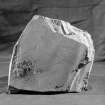
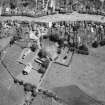




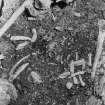

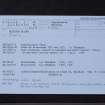




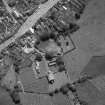
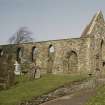
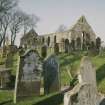
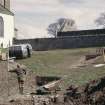
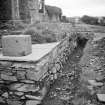
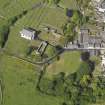

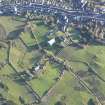

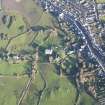


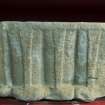
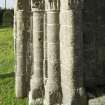
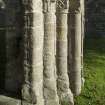



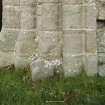
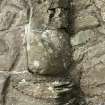

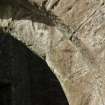
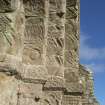


First 100 images shown. See the Collections panel (below) for a link to all digital images.
- Council Dumfries And Galloway
- Parish Whithorn
- Former Region Dumfries And Galloway
- Former District Wigtown
- Former County Wigtownshire
NX44SW 5 44476 40313
NX44SW 23 4443 4033 Whithorn Parish Church
See also NX44SW 34, NX44SW 35, NX44SW 39, NX44SW 48.
(NX 4448 4032) Priory (NR) (Rems of)
OS 6" map (1957)
Fully described.
C A R Radford and G Donaldson 1953
The idea that the foundations of the small rectangular building, almost certainly a chapel, revealed by the Marquis of Bute, and later by Radford, just E of Whithorn Priory Church, have any direct connections with St Ninian must be rejected, The "few patches on the outer face daubed with a coarse cream mortar" do not suffice to outweigh the objections against this being a principal church, built by Ninian or in his time, known as Candida Casa. Thomas considers this was a subsidiary chapel of 7th century or later date, built when Whithorn had become a monastery under Irish influence. On the other hand, the recent excavations by P R Ritchie below the E end of the priory church have revealed various oriented dug graves, with greatly crushed skeletons, which could be regarded as probably being not only of Ninian's time but also the reason for the ecclesiastical foundation at this spot. These graves have disturbed what may be cremations of the Roman period. Any 5th century church actually used by Ninian must have lain approximately below the crossing, at the E end of the priory church's nave. There are no indications that any monastery at Whithorn existed until prehaps the late 6th century.
A C Thomas 1971
The remains of the priory are as described.
Visited by OS (DWR) 16 January 1973
NX 444 402 Continuing excavation for the Whithorn Trust and Whithorn Board of Management Ltd has concentrated upon Northumbrian remains of c.700-850 AD but has encompassed earlier and later features in specific parts of the site. The principal new discoveries are:
c.5th-7th centuries. Low-lying ground has revealed a complex of curvilinear ditches, pits and stakeholes interleaved with waterborne silts which has been severly disturbed by 7th century mouldboard ploughing. A rich assemblage of finds includes A, B, D and E ware; numerous cone beaker sherds and a scatter of possible Late Roman glass and pottery.
c.7th century. An extensive cemetery on higher ground contains at least 50 graves mostly laid out in regular rows. Graves include long cists with and without stone cover slabs.
Late 7th-8th century. A series of timber and timber and stone buuildings oriented SW NE are linked by an extensive shale surface. Dendrochronology and numismatic evidence indicate the settlement originates in c.680-720 AD and continues into the 9th century. A small stone-founded building with glazed windows had been damaged by fire. A shallow internal grave contains a carbonised coffin with iron fittings. After reconstruction adjacent ground was used for the burials of infants and children. 'Special' deposits include a bundle of disarticulated human and animal bone and a spread of cremated human bone.
Mid 9th century: Late Northumbrian ploughing identified in 1987 was completely excavated. Complex micro-stratigraphy of plough sods confirms the use of mouldboard ploughs. Re-examination of the strata in the low-lying part of the trench indicated that the low ground was flooded c800-1000 AD.
13th Century. An extension on behalf of HBM at the NW angle of the main trench has revealed the ends of cultivation ridges dug through Northumbrian deposits. Cultiavtion apparently dates to the 13th century and probably reflects a major re-organisation of the ecclesiastical precinct. An adjacent - and broadly contemporary - circular stone structure is enigmatic. The SW limit of the 13th/15th century graveyard has been identified.
15th-20th century. The extension has revealed a sequence of 15th-20th century features including 1 15th-17th roadway, an 18th-20th century boundary wall and a 20th century steam-heated greenhouse.
P Hill 1989
NX 444 401 A 20th century well-pit has been excavated on behalf of HBM to record disturbed stratigraphy.
NX 444 403 Trial excavation on behalf of HBM has revealed late medieval children's burials to the SE of the Priory crypts. The graves were disturbed by the foundations of a possible winch used during the refurbishment of the crypts in the late 19th century.
Re-examination of the stairs leading from the crypts to the Priory on behalf of HBM has continued the excavation of 16th to 17th century demolition deposits and revealed new structural evidence.
A Nicholson 1989
NX 444 402 The fifth season of excavation concentrated on a range of 8th to 9th century Northumbrian ecclesiastical buildings comprising a church, burial chapel and childern's graveyard, associated with an enclosure wall, subsequently replaced by a massive stone terrace. These occupy higher ground in the north part of the site. Excavation to the S completed the examination of a range of Northumbrian timber halls and continued the exploration of an underlying Early Christian graveyard.
The church (Building 1) revealed a complex structural history with at least five principal phases focussed on a spot initially marked by a standing stone. The earliest structure (Phase 1) was possibly a wooden shrine, the later churches were all of timber. The walls of the earlier two (Phases 2 and 3) were set in trenches, the walls of the later buildings (Phases 4 and 5) rested on stone sills. The first church was probably built in the late-7th or early-8th century, the last was demolished in the mid-9th century. A later structure (Phase 6) set in the ruins of the Phase 5 church probably dates to the late-9th century or 10th century.
The burial chapel (Building 2) to the east of the church had an equally long structural history apparently spanning the same period. The stone-founded walls had been renewed on at least three occasions. The walls of the last two phases were built of clay. The Phase 2 building had stained-glass wimdows. The chapel contained four burials, three in wooden coffins with iron fittings.
The children's graveyard (Structure 3) lying to the east of the burial chapel has produced some 45 burials, all under 10 years old. These were associated with a sequence of walls and surfaces defining the graveyard.
The enclosure wall was linked to the early phases of the church and burial chapel. It was replaced by a massive stone terrace associated with the two later churches (Phases 4 and 5) by the mid-8th century. Broadly contemporary remains excavated beyond the enclosure wall included two successive timber halls (Buildings 6 and 7) and a scatter of Northumbrian burials. The latter included coffin burials and lintel graves.
Continuing excavation of an earlier (possibly 7th century) graveyard in the east sector of the site revealed regular rows of 'lintel' graves focussed upon an earlier cist grave (unexcavated) surrounded by paving. An earlier ditch lies to the north.
Excavation in advance of a pathway connecting the Priory Museum to the crypts revealed a long sequence. The earliest feature was the doorway and part of the north wall of a timber hall (probably 8th century). This was overlain by a sunken roadway (9th or 10th century) subsequently covered by a stone platform. These features were disturbed by a later graveyard (probably 13th to 15th century) into which the foundations of the south crypt were dug in about 1500 AD. A second group of graves apparently postdated the construction of the crypt. Later features included the kirkyard wall demolished by the Marquis of Bute's workmen in the 1880s and a pit containing the decayed, timber sub-frame of a construction machine - possibly a winch - used during the reconstruction of the crypts. Later drains, paths and richly-manured soil attested the horticultural skills of successive museum custodians.
Sponsor: HBM
P Hill and A Nicholson 1990
The sixth season of excavation by the Whithorn Trust completed the exmination of the Northumbrian timber church exposed in 1990. The underlying Early Christian deposits included a roundhouse, two rectangular timber buildings, two shrines and an extensive graveyard. Scattered Roman finds indicate activity in the 1st-4th centuries.
Early structures included a timber roundhouse (c10m in diameter) and another building occupying a platform quarried into steeply shelving rock associated with a curvilinear apron revetted with stone. The latter building overlay an insubstantial rubble bank or ledge revetted with stakes, possibly demarcating an enclosure around the crown of the hill. The bank was abutted by spreads of burnt limestone, plaster and cement, apparently representing displaced builders' debris rather than demolition material.
This discovery gives tantalizing support to the theory long propounded by senior scholars that there had been a mortared and/or plastered building at Whithorn in the late Roman or immediately post-Roman period. The memory or, indeed, survival of such a building would account for the Latin and Old English names of Whithorn - Candida Casa and hwit aerne - first recorded by the Venerable Bede in 731 AD. The writer has disputed this hypothesis for the past eight years and is now delighted to recognize its potential validity. The bank and burnt limestone are ealrier than spreads of imported amphora sherds (B ware) of the later 5th earlier 6th centuries, but cannot otherwise be dated securely. The nearest source for the limestone would have been outcrops of Carboniferous rock in the Dalbeattie area some 22 miles to West by sea.
The decay of the roundhouse and platform building was followed by a severe fire beyond the excavated area. Charcoal was strewn over much of the site but there was no sign of in situ burning. Numerous sherds of 'B' amphora were found resting on the charcoal.
The site was comprehensively redeveloped shortly afterwards (Phase 2). A rectangular timber building erected on level ground towards the centre of the site was associated with a paved roadway which linked it with two shrines lying to the north and east. The northern shrine comprised a platform cut into the slope and approached by stone stairs. A regular setting of four timber or stone pillars at the centre of the platform subsequently became the focus of the Northumbrian church. The eastern shrine was a circular space variously defined by a ditch, a kerb, paving and graves. It overlay the remains of the earlier roundhouse and was perhaps intended to commemorate the building or more probably a revered inhabitant.
A massive cist close to the centre of the eastern shrine contained vestigial remains of two bodies apparently representing a 'special' burial. This grave subsequently served as the focus for a small cemetery of timber and/or stone lintel graves. In two subsequent phases (3 and 4) the graveyard gradually expanded westwards. Lintel graves were replaced by burials in log coffins during Phase 3.
During Phase 4 circular platforms were built on the slope at either end of the Phase 2 shrine. An arc of vertical timbers on the western platform remained standing when the first Northumbrian church was built. The eastern platform was later to be the site of the Northumbrian burial chapel.
The condition of the Phase 2 causeway deteriorated during Phase 3 and it was eventually replaced by a gravel road in Phase 4. During this period deep deposits of rubbish, water-borne debris and mud accumulated at the foot of the slope. These produced a massive quantity of animal bones, more than hundred sherds of vessel glass and numerous other artefacts including bronze pins, clay and stone-moulds, a large bronze fish-hook, nails and a double-sided antler comb. Pottery was sparse but a few sherds of E ware were found in relatively late layers.
A range of Northumbrian ecclesiastical buildings ( a church, burial chapel and children's graveyard) on high ground in the north part of the site was described in the 1990 edition of Discovery and Excavation. The 1991 excavation revealed the earlier phases of the church and examined a series of walls, terraces, paths and roads linking these structures together. The identification of more than 60 Northumbrian coins from these deposits has provided a relaible chronological framework for the period from the mid-8th to mid-9th centuries.
The Northumbrian church has revealed a long structural history spanning roughly two hundred years. The original church was a simple rectangular building overlying the Phase 2 shrine and apparently enclosing the two pillars which remained standing. A similar building was subsequently erected over the western platform and was possibly intended to enshrine its enigmatic central feature. Shortly afterwards the adjacent gable walls were demolished and the two buildings were joined together. The resulting church was some 18.0m long and 4,5m wide. Some time later regularly spaced posts were erected beyond the north and south walls. These rose vertically and so cannot be equated with the angled buttress posts supporting other large timber buildings of this period. They may be interpreted as colonades probably supporting a veranda roof.
After a prolonged history of extension, renovation and redesign it was destroyed by fire in the mid-9th century. The internal fittings of the church had been dismantled shortly before the fire and the building was used inter alia as a winnowing barn. The demolished features included a transverse screen, incorporating the surviving pillar from the Phase 2 shrine, and a table altar lying immediately to the west in the nave. A sherd of pseudo-Samian and a coin of Constans (minted 343-346 AD) from the adjacent surface may have been part of a collection of relics contained by the altar and lost when it was dismantled. Four other stone pillars set against the walls of the nave had been removed at the same time. The writer's initial caution in identifying the building as a church has evaporated entirely in light of the evidence of continuity from the earlier shrine(s) and the fuller understanding of the internal features and associated finds.
An extended interim report will be available early in 1992 from the Whithorn Trust 45-7 george Street, Whithorn, Wigtownshire, DG8 8NS.
The friends of the Whtihorn Trust have invested a valuable legacy (the D R Macdonald bequest) to endow an annual lecture series to explore the history of Whithorn and its national and international relationships. The inaugural lecture - 'Whithorn's Christian beginnings: When? Where? Whence and by Whom?' - will be given by Professor Charles Thomas, on September 1992.
Sponsors: The Whithorn Trust, The Whithorn Board of Management Ltd, Dumfries and Galloway Regional Council, Wigtown District Council, Historic Scotland, Wigtown District Skill development Centre, The Friends of the Whithorn Trust (Stirling), The Society of Antiquaries of London, The Society of Antiquaries of Scotland, The Dumfriesshire and Galloway Natural History and Antiquarian Society, The Jennie S Gordon Memorial Foundation, The Hunter Archaeological Trust, The Orcome Trust, The Russell Trust, The Mouswald Trust, The Tristan Trading Co Ltd.
P Hill 1991
In 1992 excavation moved to the N side of the hill. The downhill half of the trench was dominated by deep greywacke quarries of c1400 AD into which a major Priory drain had been built and over which a secular priory building (storehouse/byre/stable) had been built. A narrow col between two ridges of bedrock escaped quarrying and produced a distinctive hollow and surface associated with imported 6th century pottery and glass.
Uphill of the quarries, excavation is not yet complete. The priory building of the 15th century overlay an undated structure which overlay mud floors dated to c1100 AD from an introdden coin and pottery. The mud floors are part of wattle-built structures associated with upstanding fragments of much earlier timber buildings. The early timber buildings are probably Northumbrian (8th century), and appear to overlie an earlier generation of large structures.
An almost total lack of midden from the building sequence suggests continuous occupation from the 6th century to the 12th, involving only two or three generations of buildings. In situ smithy waste has been recovered from one Northumbrian building; an associated furnace will be examined in 1993. No building has produced a domestic hearth and all buildings from the 8th century to the 12th are considered industrial and storage premises.
D Pollock 1992.
In a 13-week season (in 1993), the unfinished length of the 1992 trench was reopened and extended a further 15m southwards, over the flat hilltop towards the 1986-91 trench. Almost the entire extension fell within a Northumbrian graveyard bounded by a wall foundation. A currently-undated fire (probably 9th century) had destroyed wicker and daub buildings representing one of the encroachments on the graveyard. Most graves have not yet been excavated.
To the N of the graveyard, traces of stake-walled, wicker-walled and plank-walled buildings provide a long sequence of occupation, originating well before the walled enclosure. The sequence contains little dateable material.
D Pollock 1993.
NX 444 402 In a 13 week season the 17m by 8m trench on the flat hilltop, opened by D Pollock in 1993 as an extension to his 1992 trench (Pollock 1993), was continued by York Archaeological Trust. The 1995 season revealed a graveyard, origionally bounded to the N by a wall foundation of 8th/9th century or later date. This graveyard remained in use for several centuries, with some of the graves post-dating a fire radiocarbon dated to the 11th/12th century. More than 50 burials were excavated in 1995, a proportion of which produced corroded iron hinges, brackets and locks, suggesting burial in wooden coffins. The orientation of the burials was mainly E-W, although there was some variation and a degree of intercutting. The bone preservation was generally poor. At least 50 burials remain to be excavated in a future season. Investigation also suggested that the graveyard had been encroached upon several times during its lifetime, probably by industrial structures used for small-scale metalworking.
There are also indications of an early occupation (5th/6th century) of the hilltop pre-dating the graveyard, associated with a narrow ditch underlying the possible Northumbrian wall foundation and cutting into the bedrock. These early features will be investigated in 1996.
In addition to this main excavation, a 9m square trench, Trench B, was opened in the field to the W, at the foot of the hilltop. It was intended that this trial trench would locate the limit of significant archaeology, and it was positioned over a possible linear feature identified by early survey work.
Investigation revealed a conglomeration of linear alignments and stone surfaces running N down the slope towards the Kett burn. No dating evidence was recovered from these deposits but they were sealed by 15th century and later plough soils. The results suggest that further excavation here would prove fruitful.
Sponsors: Whithorn Board of Management, Dumfries and Galloway Regional Council, Wigtown District Council, Friends of Whithorn Trust, The Mouswald Trust, The Jennie S Gordon Memorial Foundation, The Russell Trust, The Hunter Trust, Society of Antiquaries of Scotland, Dumfries and Galloway Natural History and Antiquarian Society.
A Clarke 1995.
Final season of work in Trench A, the 17 x 8m hilltop trench, by York Archaeological Trust. Most of the 11 week season was spent excavating over 100 burials of 7th to 9th-century (Northumbrian) date, bringing the total number of graves date to well over 150. These burials were heavily intercut and concentrated in the E corner of the trench. Recovery of iron chest fittings in situ suggests that many of the bodies were buried in wooden chests, but there was also evidence for shroud burials and stone-lined graves covered by wooden planks. One burial in the E corner was marked by half a granite millstone placed at its head (SW) end.
Removal of the 7th to 9th-century graveyard deposits revealed silty spreads containing non-ferrous metalworking debris at the SE end of the trench, capping at least six early burials (c AD 550-650) set against the bedrock ridges and aligned SW-NE; one of the grave cuts was lined with stones. Only tooth enamel and crumbs of long bones survived. These burials overlay a series of structural features cut into the natural bedrock. These features, including arcs of post-holes and slots, apparently utilising the flattened areas of bedrock, were bounded by a shallow ditch at the NW end of the site, directly beneath the 7th to 9th-century wall foundation.
A topographical survey of the fields to the W and SW of Trench A was carried out by York Archaeological Trust, who also commissioned GeoQuest Associates to undertake a resistivity survey of the same area, as well as of that area directly to the SE of Trench A. A large rectangular stone building was located in the latter area.
Sponsors: Whithorn Board of Management, Dumfries & Galloway Regional Council, Wigtown District Council, Friends of Whithorn Trust, Mouswald Trust, Jennie S Gordon Memorial Foundation, Russell Trust, Hunter Trust, Society of Antiquaries of Scotland, Dumfries & Galloway Natural History & Antiquarian Society.
A S Clarke, 1996
A watching brief was undertaken for Historic Scotland during the insertion of a new access stairway and sump at the N end of the crypt, below the quire of the priory church. The stairwell contains a blocked 13th-century stairway, leading up to the N aisle of the quire. A midden deposit tipped from W-E overlay the blocking, and was itself overlain by demolition rubble which may be attributed to the destruction of the E end of the church in the late 16th century. The midden deposit contained animal bones with butchery marks, and shellfish remains. The sump at the foot of the stairway revealed natural boulder clay and bedrock directly below the current floor level.
Sponsor: Historic Scotland
A Nicholson 1996
The seal of the Priory of Whithorn was found at the manse (Soulseat Manse see NX15NW 125 ) 'a number of years ago' after 'some tentative excavation of the the site was made by Mr Paton...' In the garden of the manse, he found the seal of the Priory of Whithorn', 'now in an Edinburgh Museum' (Reid 1930). The museum quoted is now the Museum of Scotland and the seal is permanently on display (reg no. H. NM 147), on level 1, Medieval Church.
Information to RCAHMS via e-mail from Mr P Heslop, 8 May 2003.
NX 444 403 During 2003-4, the inventory of a large collection of carved stone at Whithorn Priory was completed as part of the Ex Situ Carved and Moulded Stones Project (DES 2003, 7-10).
Because so little remains of the priory church and associated buildings, it was difficult to make comparisons between in situ and ex situ material. However, two sections of moulded arches do relate to the arch of one of the tomb recesses in the N nave wall. A related group of two large capitals and a column shaft probably came from a (now lost) transept or choir aisle. Another group of a base and four capitals were associated with paired columns, and probably came from the cloisters.
A set of 13 coping stones provided the roofline of part of an early building. One of these is angled, and this, together with the position of the drip moulding on each piece, indicates that the stones were set on top of a projecting architectural feature, such as an angled turret or a buttress. Although no traceried windows remain in situ, a number of window mullions, as well as sections of flowing tracery, occur in the stone collection, indicating that the church once had several large traceried windows.
Inventory April-December 2003; 260 pieces; mostly 12th-15th/16th century, with a few later fragments; NX44SW 5.
Archive held by HS and in the NMRS. See also www.arch-etype.net.
Sponsor: HS.
M Markus 2004
Excavation (1957 - 1967)
Between 1956 and 1967 excavations were carried out on and above the barrel-vaulted crypt and undercrofts of the eastern end of the church. These exposed a number of high status ecclesiastical and lay burials in stone cists and graves, including episcopal burials, accompanied by croziers, patens and chalices.
Lowe 2009
Excavation (1972 - 1975)
At the beginning of 1972 five small exploratory trenches were excavated to the south of the existing priory buildings. Two were placed in the market garden (NX 4442 4023) and three in the adjacent field to the north-east (NX 4446 4025). In 1975 further trenching was carried out in the field to the north-west of the priory. The excavations encountered evidence for buildings associated with the north range of the cloister, and for a later building, possibly a stable belonging to the minister.
Tabraham 1979, 29-38
Publication Account (1986)
Although the history of Christianity in Scotland probably began at Whithorn, the visitor to this unassuming town may not at fIrst sense an atmosphere of spiritual antiquity, nor will he fmd the meaning of the ecclesiastical remains themselves immediately self-evident There are three main visible objectives: the Museum at the corner of Bruce Street houses the important carved stories; within the churchyard there are the remains of the medieval cathedral-priory, the most prominent portion being the nave which was altered for post-Reformation use; and beyond that, the present parish church built in 1822 on the site of the east range of the medieval cloister.
These are disparate elements in a long and complicated story, and there are still considerable gaps in our knowledge, especially of its earliest phases. Despite the attentions of generations of archaeologists, Whithorn still retams the quiet lure of a place whose rich seams of archaeological potential have not yet been worked out
It was here that St Ninian, or Nynia, made his headquarters as bishop and missionary some time in the early 5th century, the first to be associated with the stone church or cathedral which, according to Bede, was known as the White House (Ad Canaida Casa) and was dedicated to St Martin of Tours (d. 397). However, Christianity at Whithorn, and perhaps other pockets in the South West, was older than Ninian; how much older is not known, but his appointment was probably in response to an organised local community.
The actual location of the white-plastered (?and lime-mortared) Canaida Casa, the first recorded church-building in Scotland, has long been a matter of debate. Unsubstantiated claims have been made in favour of Isle of Whithorn (no. 69); the current favourite, although it may equally belong to the 7th century, is the small building, now defmed by modem dwarfwalls, at the eastern end of the crypt of the medieval cathedral-priory. When first uncovered, the roughly built walls were coated externally with a cream coloured plaster. Excavations carried out in this vicinity are reported to have reached the earliest Christian levels; the only tangible evidence of the Ninianic period on public display, the inscribed pillar stone known as the Latinus stone, was also found in this general area in 1891. Ascribed to the mid 5th century by reason of the form and formula of the wording, it is the earliest Christian memorial in Scotland.
Little is known about the size and character of the monastery, which succeeded or formed part of the Ninianic church. We can be reasonably certain, however, that the pillar stone known as the Petrus stone belongs to a Celtic monastic phase in the 7th century. It stood at the roadside about 400m south of Whithorn, presumably within the monastic precinct It bears an incised curvilinear cross with chirho symbol set within a double circle; the Latin inscription, cut in a rare form ofMerovingian lettering reads 'The place of Peter the apostle'. '
Shortly before AD 731, the monastery was reconstituted as the centre of an Anglian bishopric, following the establishment of Northumbrian control in Galloway and, according to Bede, 'through increase of the ranks of the faithful'. There was a known succession of bishops throughout the 8th century, but thereafter the records fall silent until 1128. Our main body of historical evidence for the intervening centuries is in fact the group of carved stones in the museum. There are at least five, three cross-fragments and two slabs, which appear to belong exclusively to Northumbrian sculptural traditions of the 8th and 9th centuries. The rest are of a distinctive Whithom 'school' of monuments, and belong to a period of Viking or Anglo-Norse control and settlement in the Machars from the early 10th century onwards.
Of the Whithom school, about twenty crosses would have served as headstones for individual graves, the majority having come from Whithorn. Only one survives complete, and only one bears a decipherable inscription (in runes): 'The monument [or cross] of Donferth'. The taller crosses are mainly from the surrounding district, marking religious centres and showing a respect on the part of Norse incomers for Christian places of burial. The most complete of these cemetery crosses is the 10th century Monreith Cross which stands 2.3m high. Stylistically, the disc-headed form of the crosses is partly derived from the engraved circled cross lorig known in Galloway, while the patterns of interlace, the principal surface ornament, are Norse modifIcations of Northumbrian art. The cross-head typical of the Whithorn school has an embossed centrepiece and expanded curved arms with circular sunk 'armpits', sometimes also bossed in false relief.
The bishopric was revived in 1128, possibly at the instance of Fergus, Lord of Galloway, but the status of the community which served the restored see for the first fIfty years is not clear. We do know, however, that a church of Romanesque style was erected in about the middle of the 12th century; its most unmistakeable feature is the ornamented south doorway at the west end of the nave where it was repositioned possibly in later medieval times. This Romanesque church was of cruciform plan with a short aisleless nave and an eastern arm of unknown extent, presumed long and aisled. There are contemporary fragments in the museum.
Whithorn's institutional history becomes clearer upon the introduction in about 1175-7 of Premonstratensian canons. By about 1235 the convent consisted of a prior and twenty canons, but numbers subsequently fluctuated, rising to about 25 in the early 16th century and down to about 16 in 1560. The architecture of the cathedral-priory is represented by 13th century and later work in the nave and crypt at the east end. This church was rebuilt over and around its predecessor, incorporating some older details. The other south-facing doorway and most of the windows and tombrecesses in the nave belong to this period; the relatively blank north side-wall flanked the cloister-garth. The present parish church occupies the northern end of the east range of the conventual buildings.
A special feature of the layout is the two-level arrangement at the east end. The eastern outline of the elaborate aisled choir is marked by modem walls, but the vaulted chambers of the crypt are intact and accessible. This two-storeyed treatment was dictated by the fall in ground level and by the need to provide space for St Ninian's shrine. The shrine attracted a considerable and lucrative pilgrimage traffic throughout the Middle Ages, probably second to none in Scotland. The last of the royal pilgrims was Queen Mary in 1563; by 1581 pilgrimages were formally prohibited.
At the Reformation the bishop and most of the canons, but not the prior, espoused the cause of the reformers. Until the fmal re-establishment of Presbyterianism in 1690 there was thus a succession of bishops, except in 1588-1605 and 1638-61. The revenues of the priory became reunited with the bishopric in 1605, and shortly afterwards the nave of the former cathedral priory was repaired and rebuilt to suit the reformed liturgy. It served as a cathedral as long as Episcopacy prevailed, and from 1690 until 1822 its status was a parish church. The most substantial work undertaken in this period, probably early in the 18th century, was the remodelling and foreshortening of the west end following the collapse of the western tower. The frontal tower on the present parish church is an addition to the internally refurnished block of 1822.
Information from ‘Exploring Scotland’s Heritage: Dumfries and Galloway’, (1986).
Geophysical Survey (25 March 2002)
NX 444 403 A series of remote sensing surveys was undertaken in March 2002 over an area of ground at the E end of Whithorn Priory Cathedral, to determine whether graves and other buried features could be identified in advance of a proposed programme of remedial and conservation works associated with the vault below the South Chapel.
It was not possible to correlate sub-surface anomalies with graves, as indicated by in situ headstones. The remains of what may be the S wall of the choir and a S stair down to the crypt, however, were clearly identified.
Archive to be deposited in the NMRS.
Sponsor: HS
C Lowe 2002
Watching Brief (2 March 2004 - March 2004)
Kirkdale Archaeology was asked to undertake a Watching Brief during the creation of a new Stone Store building to the west of the Priory. The removal of modern sheds in the area exposed a gravel, sand, sandstone chunks, and gravestones. This material is probably derived from an excavation to the north of the walled enclosure done around 1988. A red sandstone grave marker was originally Victorian but was reused in later masonary.
D Murray 2004
Sponsor: Historic Scotland
Kirkdale Archaeology
Archaeological Evaluation (October 2008)
Headland Archaeology Ltd conducted an evaluation on land proposed for an extension to the existing cemetery at Whithorn, Dumfries and Galloway. The aim of the work was to test the archaeological potential of the ground due to the proximity to Whithorn Priory; a Scheduled Ancient Monument and one of the earliest sites of Christian activity in Scotland.
A total of fourteen trenches were excavated, with one of these located in the existing cemetery where a new access road will be required. The trenching established that the density of archaeological activity was low and appeared to be restricted to two distinct areas. A ditch was identifi ed at the north-west side of the area and a possible ditch and pit at
the south-east corner of the fi eld. The pit is likely to relate to quarrying and the two ditches may be to do with drainage and water management. None of these features can be dated on the basis of the data collected during the evaluation.
The results of the evaluation give litt le indication that this fi eld within Whithorn was being used either during the early development of the monastic sett lement or during the medieval period. This is in contrast to the Manse Field to the west where extensive remains were uncovered in 2001 and 2003. The presence of numerous drains in the current evaluation trenches may be an indication that this bit of ground is wet and unsuitable for activity.
K Dingwall 2008
Watching Brief (3 December 2009 - 12 December 2009)
NX 44560 40405, NX 44554 40393, NX 44538 40399 and NX 44541 40415 A watching brief was carried out 3–8
December 2009 during topsoil stripping of ground chosen for an extension to Whithorn Cemetery. A small number of features were recorded including ditches, pits and a dry stone revetment wall. The features represented several different phases of activity. The oldest phase was represented by a large drain or boundary ditch. This was followed by an industrial phase denoted by a gully and several pits filled with soil containing charcoal, slag and fragments of furnace lining. The latest phase was represented by the dry stone
revetment wall, and is probably associated with the current cemetery to the S of the site.
Archive: RCAHMS
Funder: Dumfries and Galloway Council/Combined Services
Magnar Dalland – Headland Archaeology Ltd
External Reference (14 October 2011)
Scheduled as 'Whithorn Priory, monastic settlement and priory... the buried remains of a large early historic monastic settlement, founded probably in the 5th or 6th centuries AD; buried remains of later Viking and medieval settlements; graves that may date from the 5th or 6th century AD to the 19th century; and the remains of a medieval priory and cathedral. The west end of the medieval cathedral survives as a standing structure, while the east end is represented by buried foundations and crypts, the crypts partially reconstructed during the late 19th and 20th centuries. Archaeological evaluations and excavations demonstrate that complex archaeological deposits extend into areas that have not been disturbed and have enormous potential to enhance understanding of the site. The monument lies on a low rise towards the eastern edge of the basin of the Ket Burn, at around 60m OD. Slightly higher ground screens the site from view from most directions. The town of Whithorn, with its late medieval street layout, lies immediately south-east of the monument and there is a harbour 5.5km to the south-east at the Isle of Whithorn.'
Information from Historic Scotland, scheduling document dated 14 October 2011.
Project (13 June 2016 - 14 June 2016)
NX 44476 40313 A geophysical survey was undertaken, 13–14 June 2016, within a field to the SW of Whithorn Priory known as the Market Garden. The aim of the survey was to answer research questions raised by excavations immediately to the NE in the Glebe Field. Although the field under investigation covers c0.2ha, areas at the N and S limits of the field could not be investigated due to dense vegetation. A large spoil heap dominates the centre of the field and a further spoil heap and raised garden beds along the W limits of the field greatly reduced the area available for survey.
Although the three techniques applied – gradiometry, resistance and ground penetrating radar – detected anomalies of possible interest, interpretation is extremely cautious, given the ephemeral nature of many of the responses and the limited area surveyed. Current and past use of the site also confused the data sets.
The gradiometer data set is extremely noisy and no clearly defined anomalies, other than strong ferrous responses, have been detected. However, both the resistance and the GPR data have detected anomalies which could be consistent with potential structural remains, although such an interpretation is extremely cautious. There are suggestions of a possible ditch-like feature running through the S of the survey area, though it is extremely ephemeral and only apparent in the resistance data.
Archive: Rose Geophysical Consultants
Funder: Historic Environment Scotland
Susan Ovenden – Rose Geophysical Consultants
(Source: DES, Volume 17)
Magnetometry (13 June 2016 - 14 June 2016)
NX 44476 40313 Magnetometry survey.
Archive: Rose Geophysical Consultants
Funder: Historic Environment Scotland
Susan Ovenden – Rose Geophysical Consultants
(Source: DES, Volume 17)
Ground Penetrating Radar (13 June 2016 - 14 June 2016)
NX 44476 40313 Ground penetrating radar survey.
Archive: Rose Geophysical Consultants
Funder: Historic Environment Scotland
Susan Ovenden – Rose Geophysical Consultants
(Source: DES, Volume 17)
Earth Resistance Survey (13 June 2016 - 14 June 2016)
NX 44476 40313 Earth resistance survey.
Archive: Rose Geophysical Consultants
Funder: Historic Environment Scotland
Susan Ovenden – Rose Geophysical Consultants
(Source: DES, Volume 17)








































![Watching brief, Irregular cut [41] half-sectioned, Whithorn Cemetery Extension](http://i.rcahms.gov.uk/canmore/l/DP00305424.jpg)
![Watching brief, ‘Banana’-shaped pit [29] half-sectioned, Whithorn Cemetery Extension](http://i.rcahms.gov.uk/canmore/l/DP00305425.jpg)































































